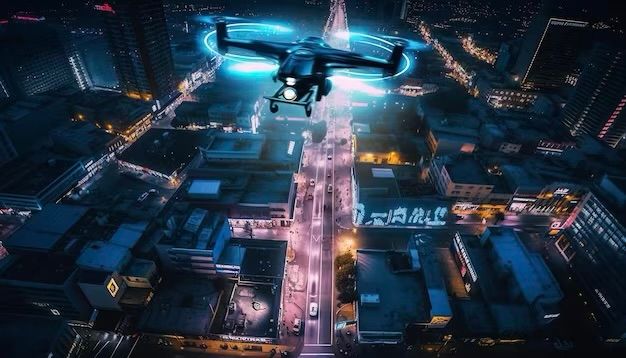Acapulco at a Crossroads: From Tourist Haven to Strategic Military Frontline
Acapulco: From Tourist Paradise to Military Vanguard - Envisioning a Future Smart City Acapulco, once the glittering jewel in Mexico's tourist crown, now stands at a crossroads as it contemplates a future that could redefine its very essence. The strategic placement of nearly 10,000 National Guard troops

Acapulco: From Tourist Paradise to Military Vanguard - Envisioning a Future Smart City
Acapulco, once the glittering jewel in Mexico's tourist crown, now stands at a crossroads as it contemplates a future that could redefine its very essence. The strategic placement of nearly 10,000 National Guard troops within its domain signals a shift from a leisure haven to a potential military smart city. This prospect, while still speculative, carries weight given the government's post-hurricane recovery initiatives, which intriguingly align military expansion with the revitalization of tourism infrastructure.
The city's fabric was torn asunder by the ferocity of Hurricane Otis, a Category 5 colossus, leaving behind a landscape begging for transformation. President Andrés Manuel López Obrador's vision of recovery intertwines the resurgence of tourism with a significant bolstering of military might. The establishment of 38 new barracks housing National Guard troops is a testament to a determined effort to restore order, especially after the Guard's evident shortcomings in preventing looting post-disaster.
This bolstering of military presence, set against the canvas of enduring cartel conflict, underscores the president's strategy to deploy armed forces as the vanguard against criminal syndicates. This military buildup aligns with a broader strategy aiming to restore the tranquility once synonymous with this resort locale.
Conversely, the roadmap to economic rehabilitation for the storm-ravaged hospitality sector remains murky. The government's hesitance to extend direct support to hotel operators, coupled with the conspicuous absence of dedicated reconstruction allocations in the upcoming budget, has fueled civic unrest. The citizens of Acapulco are clamoring for a more robust reconstruction agenda that ensures their livelihoods are reflected in the national fiscal plan.
Acapulco's unfolding story—a tug-of-war between its nostalgic identity as a tourist sanctuary and its emerging militarized silhouette—crafts a narrative of stark contrasts. Should Acapulco successfully morph into a smart city, fusing high-tech military prowess with civilian urban planning, it may well become a template for new urban paradigms in the 21st century.
Strategic Pivot: The Geopolitical Implications of a Military Smart City in the Americas
The conceptualization of a military smart city in Acapulco, if realized, would serve as a pivotal strategic and geopolitical landmark within the Americas. It would mark a significant shift in the balance of power and influence, not only for Mexico but also in the broader context of U.S.-Latin American relations.
Geopolitically, such a development would signal Mexico's readiness to assert more control and stability within its territory, especially in regions historically plagued by organized crime and drug trafficking. The presence of a substantial military installation would aim to deter criminal activities, thereby reasserting the sovereignty of the Mexican state in areas where it has been challenged.
From a U.S. perspective, a militarized Acapulco could be seen both as a bolstering of security and a check against external threats in the Western Hemisphere. It aligns with the Monroe Doctrine's long-standing principle of countering external intervention, while also providing a strategic point of interest in the event of Pacific confrontations or as a gateway to protect crucial maritime routes.
The establishment of a smart city with military integration would introduce advanced surveillance, intelligence capabilities, and cybersecurity measures, potentially offering a dual-use infrastructure that benefits civilian sectors while enhancing military effectiveness. This integration could extend into disaster response, where military infrastructure aids in humanitarian assistance and disaster relief, a significant concern given the region's susceptibility to tropical storms and earthquakes.
Moreover, the development could lead to an increased U.S. military presence or cooperation in the region, as the smart city could offer logistical support, intelligence sharing, and a potential base for regional operations. This could foster deeper ties between the U.S. and Mexico, although it would require careful navigation of national sovereignty concerns.
However, it's imperative to consider the implications on local communities and the message it sends about prioritizing military investment over tourism and economic development. The evolution of Acapulco into a military smart city would be a significant stride in urban-military innovation but not without its array of international and domestic repercussions.
In conclusion, while the idea of a military smart city in Acapulco presents clear strategic advantages, it also raises complex questions about regional security dynamics, U.S.-Mexico relations, and the future role of military influence in urban development within the global south.




